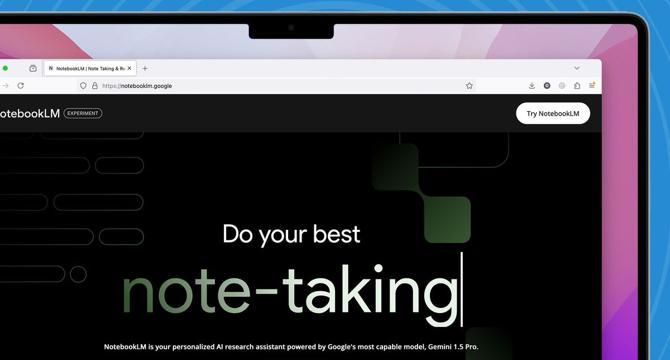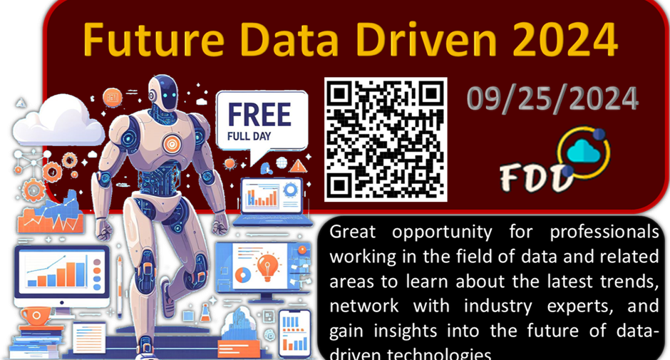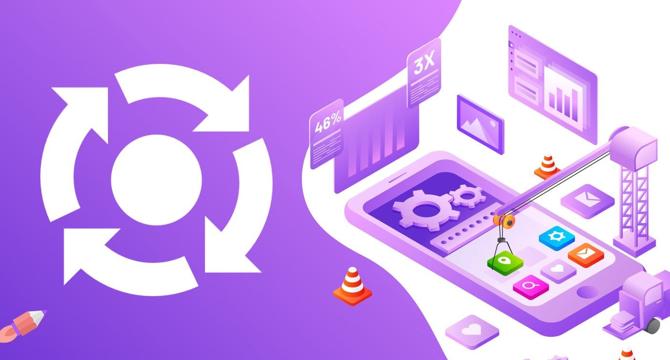Cloud News
Tech Radar
414

Image Credit: Tech Radar
Windows 11 users could get a shiny new ‘Soundscape’ Settings page to replace another bit of the ancient Control Panel
- Microsoft is transferring the legacy Control Panel's functions to the newer Settings app in Windows 11.
- A hidden 'Soundscape' panel was discovered in the Settings app, which could replace the old Sound control panel.
- The Soundscape panel is currently blank and not present in Windows 11 preview builds.
- It is expected that Soundscape will allow users to customize startup sound, sound scheme, and audio events in Windows 11.
Read Full Article
24 Likes
Tech Radar
136

Image Credit: Tech Radar
Google’s scary-good AI podcast tool just got better with built-in YouTube upload and easy sharing
- Google’s NotebookLM AI tool now supports YouTube video URLs and audio files as sources for creating engaging audio podcast discussions with ease.
- The updated NotebookLM allows users to analyze video essays and lectures, summarize group call audio, and convert class recordings into study guides.
- Previously, sharing the finished WAV files required extra steps, but now NotebookLM provides publicly shareable URLs for easy sharing.
- The expanded capabilities of NotebookLM open up endless possibilities for creating professional podcasts and enhancing the educational experience.
Read Full Article
8 Likes
VentureBeat
204

Going beyond GPUs: The evolving landscape of AI chips and accelerators
- As the focus of enterprises shifts toward advanced AI workloads, data centers’ traditional CPU-centric servers are being buffed with the integration of new specialized chips or “co-processors.”
- Over the last few years, GPUs, led by Nvidia, have been the go-to choice for co-processors due to their ability to process large volumes of data at unmatched speeds.
- The dominance of GPUs is only expected to grow, with revenues from the category surging 30% annually to $102 billion by 2028.
- Specialized AI processors and accelerators like ASICs, FPGAs, and Neural Processing Units (NPUs) are being built by chipmakers, startups and cloud providers to support select low- to medium-intensive AI workloads.
- AI processors are chips that sit within servers’ CPU ecosystem and focus on specific AI functions. They can prove more efficient than GPUs in terms of cost and power use.
- The selection of AI processors should be based upon the scale and type of the workload to be processed, the data, the likelihood of continued iteration/change and cost and availability needs.
- Globally, with inference jobs on track to grow, the total market of AI hardware, including AI chips, accelerators and GPUs, is estimated to grow 30% annually to touch $138 billion by 2028.
- IBM and Google for instance use multiple GPUs and AI accelerators to provide enterprises with choices to meet the needs of their unique workloads and applications.
- Other AI accelerators are also drawing attention in the market. This includes custom chips built for and by public cloud providers such as Google, AWS and Microsoft but also dedicated products (NPUs in some cases) from startups such as Groq, Graphcore, SambaNova Systems and Cerebras Systems.
- According to experts, it is also important for enterprises to run benchmarks to test for price-performance benefits and ensure that their teams are familiar with the broader software ecosystem that supports the respective AI accelerators.
Read Full Article
12 Likes
VentureBeat
405

Cloud, edge or on-prem? Navigating the new AI infrastructure paradigm
- Enterprise data infrastructure continues to transform due to data hungry generative AI and organizations continue to grapple with the cloud/edge/on-prem question for near-instant access to data while knowing it is protected.
- Hybrid models are seen as the way forward by many enterprises with 85% of cloud buyers deploying or in the process of deploying hybrid cloud according to IDC. AI is driving the shift to hybrid cloud and edge as models require large datasets and more computational power.
- Spending on edge is expected to reach $232bn this year due to several factors including latency-sensitive applications, limited connectivity environments and restrictions on where data can reside due to government legislation or corporate governance.
- The volume of data continues to increase and the costs associated with transmitting it to a central data store also continues to grow which makes edge computing advantageous. The influx of data can overwhelm core infrastructure which is where edge computing comes in to cache results and provide resiliency and performance in the field.
- Different cloud environments have varying benefits with public cloud perfect for auto-scaling to meet peak usage demands while on-premises data centers and private cloud environments secure and provide better control over proprietary data.
- Hybrid clouds allow enterprises to choose the right tool for the job such as in financial services where they can maintain their own data centres for banking operations while leveraging the cloud for web and mobile-based customer access.
- A hybrid approach with a combination of local devices, edge computing and larger private or public models can preserve sensitive data using strict isolation techniques.
- Hybrid can increase management complexity, but cloud providers have been extending their platforms to both on-prem and edge locations whilst OEMs and ISVs have been integrating with cloud providers.
- 80% of respondents to an IDC survey indicated that they either have or plan to move some public cloud resources back on-prem.
- Cloud providers have failed to convince customers that on-premises data centers would disappear altogether.
Read Full Article
24 Likes
Discover more
- Programming News
- Software News
- Web Design
- Devops News
- Open Source News
- Databases
- Product Management News
- Operating Systems News
- Agile Methodology News
- Computer Engineering
- Startup News
- Cryptocurrency News
- Technology News
- Blockchain News
- Data Science News
- AR News
- Apple News
- Cyber Security News
- Leadership News
- Gaming News
- Automobiles News
VentureBeat
218

From cost center to competitive edge: The strategic value of custom AI Infrastructure
- Custom AI infrastructure has become an asset and considered a strategic practice for better business strategy. AI infrastructure is significant to enterprises, and it is essential to invest in a vendor that is technologically capable of serving a reimagined enterprise operating world. Training and inference for particular AI workloads call for a groundbreaking custom AI infrastructure. Enterprises must invest in infrastructure that meets the demands of workloads 24/7. Amazon SageMaker is a managed AI infrastructure for customized solutions with open-source frameworks like TensorFlow and PyTorch. Open-source frameworks are critical for AI development, but custom infrastructure is required to handle the scale and complexity of modern AI workloads. Nvidia has taken the lead in AI infrastructure due to its GPU dominance; however, other competitors, including Intel and AMD, are looking to close the gap. Custom AI infrastructure is not just a cost center and, therefore, recognized as a strategic investment that provides a significant competitive edge for businesses.
- To balance flexibility and cost-efficiency, some enterprises now realize that they need a hybrid approach of cloud and on-premises infrastructure. This is because the pay-as-you-go model of cloud computing can become very expensive for those running AI models 24/7. As agentic AI or Artificial General Intelligence (AGI) becomes a reality, it will bring fundamental changes in the game. The future of AI infrastructure will involve the emergence of industry-specific models like BloombergGPT for financial services, and this necessitates custom infrastructure. Indeed, custom AI infrastructure is more than a technological concern and is about close partnerships with vendors to optimize specific infrastructure for particular needs. The right infrastructure is vital in transforming AI from an experimental phase into a business driver.
Read Full Article
13 Likes
VentureBeat
113

What’s the minimum viable infrastructure your enterprise needs for AI?
- Enterprises of all sizes are increasingly looking to adopt generative AI to increase efficiency and reduce time spent on repetitive tasks.
- Understanding the essential components of an AI solution is crucial.
- The foundation of any effective gen AI system is data.
- Businesses can use off-the-shelf chatbots powered by large language models (LLMs) like Google’s Gemini or OpenAI’s ChatGPT without inputting any company data, but feeding these with your company’s data would provide better benefits.
- Once you have identified the data, the next step is selecting an appropriate LLM to power AI system.
- An open-source LLM is the way to go if you prefer hosting a model on your own private infrastructure for enhanced control and data security.
- Using a retrieval augmented generation (RAG) framework is essential to create relevant answers for a chatbot or AI system.
- The RAG framework is particularly useful for enterprises that need to integrate proprietary company data stored in various formats.
- Technical expertise is still required for the implementation of AI, and development costs for a basic chatbot range from $15,000 to $30,000.
- The AI system will need regular maintenance, and maintenance costs can start at $5,000 per month.
Read Full Article
6 Likes
Tech Republic
191

Cloud Security Policy
- The Cloud Security Policy provides guidelines for secure and effective cloud computing operations.
- It covers topics such as employee responsibilities, data protection, access control, and incident response.
- Unacceptable uses of the company's cloud are defined, including illegal, unethical, harmful, and non-productive activities.
- The policy is a customizable template that can be tailored to the organization's specific needs.
Read Full Article
11 Likes
Tech Radar
81

Image Credit: Tech Radar
Meta Orion could be our AR future, but not with the lenses you'll get
- Meta Orion is a pair of AR glasses featuring see-through screens, hand and eye tracking, neural input, and the ability to integrate virtual environments with your real one almost seamlessly.
- What's clear from all hands-on demos is that this is real. The AR glasses function more or less as Zuckerberg promised.
- The glasses offer full-frame 'displays' that use waveform microLED projector technology to light up the transparent silicon carbide lens with an image, meaning that the AR experience will live wherever the wearer casts their eyes.
- However, the Verge's hands-on report suggested this version of Meta Orion will never see the light of day.
- Meta is already working on thinner and lighter versions of the glasses as the silicon carbide lenses can't be manufactured affordably at scale, which means Orion V2 will not have them.
- As a result, the shipping Orions, if and when they arrive, will have a smaller field of view, meaning the AR magic breaks quickly and will only be available to a portion of the wearer's viewport.
- If the final shipping Orion has just plastic or glass, the experience won't be the same, and Orion 2, which may still cost as much as a laptop will be yet another wearable AR disappointment.
- The key to a transformative AR experience is not just its ability to connect the physical world to your virtual one, it's about how borders don't break that illusion. A smaller field of view will mean that the AR magic breaks quickly and will only be available to a portion of the wearer's viewport.
- Meta Orion could be like wearing regular glasses with a hidden superpower; however, it's doubtful that the glasses will ever live up to the initial hype.
- Orion 2 is expected to be thinner and lighter but come with a smaller field of view and cost as much as a laptop.
Read Full Article
4 Likes
Tech Radar
77

Image Credit: Tech Radar
And it’s gone – discontinued Meta Quest 3 model already selling out online
- The 128GB Meta Quest 3 model is being discontinued to make room for the new Meta Quest 3S
- Less than a day after the announcement, the 128GB Quest 3 is already sold out in the US and Australia
- It is still available for sale on Meta.com in the UK
- Considering other options, the 512GB Quest 3 model or the new 128GB Meta Quest 3S are recommended
Read Full Article
4 Likes
Digitaltrends
223

Image Credit: Digitaltrends
Sorry, Microsoft — AI isn’t the reason people are buying new laptops
- AI PCs are selling well but it's not the onboard generative AI that's driving sales, it's the usual refresh cycle.
- Customers are not responding to AI features specifically and see limited immediate use cases.
- Despite customer preference, AI PCs are appealing due to their power and future-proof capabilities.
- The end of support for Windows 10 may drive a refresh cycle, potentially benefiting Apple's market share.
Read Full Article
13 Likes
Tech Story
286

Google Files EU Antitrust Complaint Against Microsoft
- Google has filed an antitrust complaint against Microsoft in the European Commission, accusing Microsoft of using licensing techniques to restrict competition in cloud solutions.
- Microsoft's licensing terms require customers to pay a 'cloud tax' to switch to other cloud services, resulting in businesses and public sector organizations in Europe losing up to 1 billion euros ($1.1 billion) annually.
- This is not the first time Microsoft has faced accusations of such behavior in the cloud space, and while they have settled with other parties, Google is not satisfied with the changes Microsoft agreed to implement.
- Google is calling on the European Commission to order Microsoft to change its behavior and believes that Microsoft's actions violate antitrust rules.
Read Full Article
17 Likes
Dbi-Services
54

Image Credit: Dbi-Services
Coming back to the Future Data Driven Summit 2024’s Event last night
- The Future Data Driven Summit 2024 was a remote event held from 3 PM to 2 AM.
- The event featured 5 rooms and over 55 speakers, making it challenging to choose sessions.
- Notable sessions included 'Unveiling the Future: Dive into Cloud Databases and Analytics with Fabric' by George Walters and 'Getting started with SQL and AI' by Bob Ward.
- Other sessions covered topics like SQL Copilot, SQL Development, Data Security, Kusto Query Language, and Vector Search in Azure Cosmos DB.
Read Full Article
3 Likes
Tech Radar
428

Image Credit: Tech Radar
Mozilla stands by its controversial privacy feature, but ready to "clear up" confusion
- Mozilla is facing criticism in Europe for enabling a privacy feature called Privacy Preserving Attribution (PPA) without user consent.
- Austria-based digital rights group Noyb has filed a complaint, arguing that PPA may infringe upon user rights under GDPR.
- Mozilla admits it should have done more to engage outside voices and is willing to address the confusion surrounding the default rollout of PPA.
- Noyb is calling for Mozilla to inform users, switch to an opt-in system, and delete unlawfully processed data of affected European users.
Read Full Article
25 Likes
Digitaltrends
423

Image Credit: Digitaltrends
Microsoft is giving up control of the Copilot key
- Microsoft is rolling out an update that gives users control of the dedicated Copilot key on laptops.
- Users can now configure the Copilot key to open an app that meets security and privacy requirements.
- The customization option can be found in Settings > Personalization > Text Input.
- Windows 11 may also be getting a 'Hand Off' feature for switching devices.
Read Full Article
25 Likes
Siliconangle
405

Image Credit: Siliconangle
Crowdbotics introduces new AI-powered tools to address key software development challenges
- Crowdbotics Inc. has introduced new AI-powered tools to address software development challenges.
- The new capabilities address issues such as poor or missing requirements, inconsistent architecture decisions, and uncertainty in predicting cloud costs.
- Some of the new capabilities include Enterprise Context for defining corporate standards, Technical Recommendations for architectural and design suggestions, and Application Code Generation for generating code.
- Other features include Cloud Consumption Cost Estimation, Jira Integration, and Azure Deployer for seamless deployment.
Read Full Article
24 Likes
For uninterrupted reading, download the app